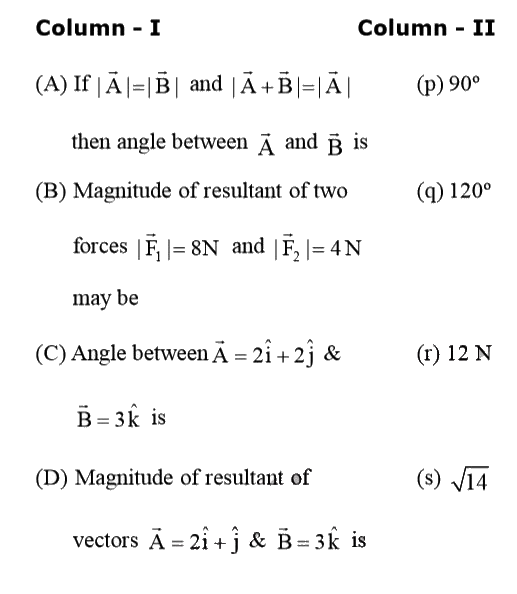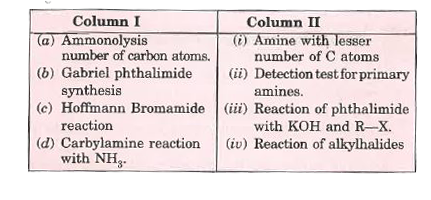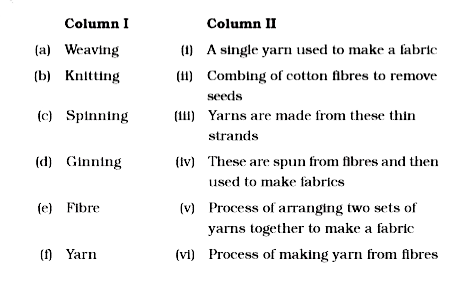Match the statement given in Column - I with the phenomenon given in Column - II.

(i - c), (ii - d), (iii - b), (iv - a)
Topper's Solved these Questions
- SURFACE CHEMISTRYBOOK - KUMAR PRAKASHANCHAPTER - SURFACE CHEMISTRYEXERCISE - SECTION - D (NCERT EXEMPLAR SOLUTION) (Assertion and Reason Type Questions)
5 Videos
- SURFACE CHEMISTRYBOOK - KUMAR PRAKASHANCHAPTER - SURFACE CHEMISTRYEXERCISE - SECTION - D (NCERT EXEMPLAR SOLUTION) (Long Answer Type Questions)
4 Videos
- SURFACE CHEMISTRYBOOK - KUMAR PRAKASHANCHAPTER - SURFACE CHEMISTRYEXERCISE - SECTION - D (NCERT EXEMPLAR SOLUTION) (Short Answer Type Questions)
29 Videos
- SOLUTIONS BOOK - KUMAR PRAKASHANCHAPTER - SOLUTIONS EXERCISE - SECTION - E MCQs asked in GUJCET/Board Exam
69 Videos
- THE D-AND F-BLOCK ELMENTSBOOK - KUMAR PRAKASHANCHAPTER - THE D-AND F-BLOCK ELMENTSEXERCISE - Section -E MCQs asked in GUJCET/Board Exams)
50 Videos
Similar Questions
Match the statements given in Column I with the oxidation states given in Column II.

View SolutionMatch the statements given in Column I with the oxidation states given in Column II.

View SolutionMatch the statements given in column-I with statements given in column-II

View SolutionMatch the reactions given in Column I with the statements given in Column II

View SolutionMatch the reactions given in Column I with the statements given in Column II

View SolutionMatch the reactions given in Column I with the statements given in Column II

View SolutionMatch the reactions given in Column I with the statements given in Column II

View SolutionMatch the statements given in Colunm I with the oxidation states given in Column II.

View SolutionMatch the reactions given in Column I with the statements given in Column II.

View SolutionMatch the terms given in Column I with the statements given in Column II

View Solution
